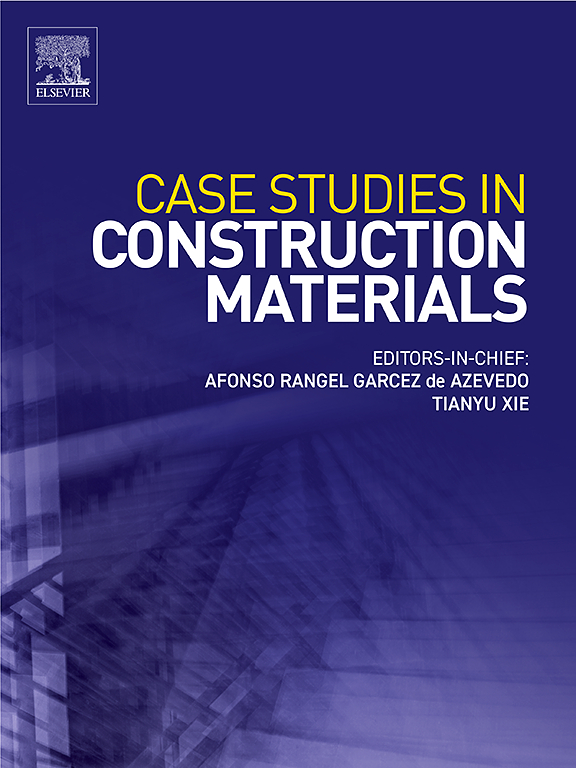Effect of severe environment and radiation on the behavior of cementitious materials modified by CKD and GBFS
IF 6.5
2区 工程技术
Q1 CONSTRUCTION & BUILDING TECHNOLOGY
引用次数: 0
Abstract
Although concrete has many advantages as a construction material under normal settings, its behavior under extreme conditions has yet to be fully investigated, particularly with new advances in concrete technology and the need to create sustainable concrete. This study looks at the strength of modified cementitious materials in harsh situations. This study looks at the strength of modified cementitious materials in harsh situations. To test strength during sodium chloride exposure (5 % and 15 %) and radiation (80, 238, 356, 662, 1173, 1333, and 2164 keV), 62 specimens were manufactured with various concentrations of Granulated Blast Furnace Slag (GBFS) (10 %, 20 % and 30 %) and Cement Kiln Dust (CKD) (50 % and 100 %). The results show that GBFS-modified materials outperformed CKD. Specimens treated to 15 % sodium chloride showed a greater loss in strength than those exposed to 5 % sodium chloride. Cementitious materials changed with GBFS are more resistant to salts (sodium chloride) than those modified with CKD. Cementitious materials with GBFS demonstrated better gamma-ray shielding properties for CKD in the half value layers "HVL" and tenth value layers "TVL". Increasing thickness has no significant influence on the Linear Attenuation Coefficient.
恶劣环境和辐射对CKD和GBFS改性胶凝材料性能的影响
尽管混凝土作为一种建筑材料在正常环境下具有许多优点,但其在极端条件下的行为尚未得到充分研究,特别是随着混凝土技术的新进展和创造可持续混凝土的需要。本研究着眼于改性胶凝材料在恶劣环境下的强度。本研究着眼于改性胶凝材料在恶劣环境下的强度。为了测试氯化钠暴露(5%和15% %)和辐射(80,238,356,662,1173,1333和2164 keV)期间的强度,用不同浓度的粒状高炉炉渣(GBFS)(10%, 20%和30% %)和水泥窑粉尘(CKD)(50%和100% %)制作了62个样品。结果表明,gbfs改性材料优于CKD。处理为15% %氯化钠的试样比暴露于5% %氯化钠的试样强度损失更大。与CKD改性的胶凝材料相比,GBFS改性的胶凝材料更耐盐(氯化钠)。在半值层“HVL”和十值层“TVL”中,含GBFS胶凝材料对CKD的伽马射线屏蔽性能较好。增加厚度对线性衰减系数无显著影响。
本文章由计算机程序翻译,如有差异,请以英文原文为准。
求助全文
约1分钟内获得全文
求助全文
来源期刊

Case Studies in Construction Materials
Multiple-
CiteScore
7.60
自引率
19.40%
发文量
842
审稿时长
63 days
期刊介绍:
Case Studies in Construction Materials provides a forum for the rapid publication of short, structured Case Studies on construction materials. In addition, the journal also publishes related Short Communications, Full length research article and Comprehensive review papers (by invitation).
The journal will provide an essential compendium of case studies for practicing engineers, designers, researchers and other practitioners who are interested in all aspects construction materials. The journal will publish new and novel case studies, but will also provide a forum for the publication of high quality descriptions of classic construction material problems and solutions.
 求助内容:
求助内容: 应助结果提醒方式:
应助结果提醒方式:


